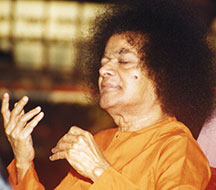
Types of Sankeerthana
Puttaparthi, Prasanthi Nilayam (Shiva Rathri )
Description
This sankeerthana is of four types. One is ‘guna’ sankeerthana, singing the qualities. Second is ‘Leela Sankeerthana’, singing the doings of God. Third is the ‘bhava Sankeerthana’ and the fourth is ‘Nama sankeertana’ singing the various names of the lord. Guna Sankeerthana means describing the auspicious qualities of God, feeling ecstasy and striving to inculcate such divine qualities within oneself. This ‘guna sankeertana’ is achieved by Saint Thyagaraja. Rama’s prowess beyond description! Is it possible to extol you even by Brahma?! I am waiting for your grace, Hear my prayers and rescue me!! Rama’s prowess beyond description! You brought back the son of your guru who was abducted by the wicked, You uprooted the evil, You freed Vasudeva from imprisonment, You protected the dove eyed Draupadi by saving her pride, You safeguarded the Pandavas umpteen times, You granted the wishes of Kuchela, You straightened the distorted body of Kubja, You saved sixteen thousand damsels from their plight, Rama, your prowess is beyond description!! There are qualities in you, O Rama, which words fail to describe. Saying like this Thyagaraja described Rama. ‘Leela sankeerthana’, singing the doings of God, represents dancing to the sacred sport of God with ecstasy, experiencing the leelas and being immersed in them is ‘Leela Sankeerthana’. This is also called as ‘Geetha govinda’. Then ‘Bhava sankeertana’, this was experienced by only by Radha, who being immersed in the thoughts of the divine turned herself into lord forgetting herself. The feelings of peace, truth, fondness, affection, sweet feelings- she experienced her life among these five divine feelings for God. Therefore, the sacred feelings of Radha and Meera came to constitute the ‘bhava Sankeerthana’. ‘Nama sankeerthana’ this was uttered by only ‘Chaitanya’. All names are your names only. A world without your name or a world without your form cannot be found in this cosmos. (A place without your form and name does not exist in this cosmos.) All forms taken symbolise peace, All names taken are auspicious, Non-dualism is the form of existence, consciousness and bliss, This is truth- godliness- beauty! Saying, ‘The beauty of the whole world is your name and form, O God!’ and seeing God in all matter, in every particle, and in each atom, Chaitanya was redeemed by the name of the Lord. Fortunately, in each age people followed one of the four paths only; whereas the people of Prashanthi Nilayam, experiencing all the four paths is indeed very fortunate. Guna sankeerthana, Leela sankeerthana, bhava sankeertana and Nama sankeerthana- the amalgamation of these four is our bhajans. There is a path that is more unique and significant than these four- ‘Nama likhithame’, writing the name of the Lord. Thinking in the mind, reminiscing with speech and writing with the hand- this is the way to sanctify the three faculties. Unification of thought, word and deed is the greatest of the ways.
Topics
-Namasmarana
-

Nama Sankeerthana is the ideal form of chanting
00:00:27Of all the forms of singing the glory of the Lord namely ‘bhava sankeertana’, ‘guna sankeertana’, ‘nama sankeertana’ or chanting the name of the Lord is supreme. One can redeem oneself by singing the name of the Lord.
-
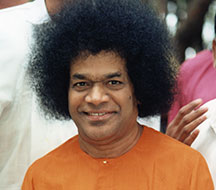
Redeem your lives by Singing His glory
00:02:21There is none in this world who does not chant the Lord’s name. One thinks of God in one form or the other. One may think of God by naming one’s children after the Lord’s name; one might call upon one’s friends who are named after the Lord and thus utter the Lord’s name! All names are divine and it’s hard to find one that is not. All names and forms are that of the Lord! One can liberate oneself by chanting any of the names. One may extol God in anyway based on one’s illusion and may derive satisfaction but the name is true. There is no other penance greater than making the name of the God dance on one’s tongue. Singing the glory of the Lord amounts to pilgrimage, reading the sacred texts and penance. Of all the forms of singing the glory of the Lord ‘nama sankeertana’ or chanting the name of the Lord is supreme. One can redeem oneself by singing the name of the Lord.
-

Nama Sankeerthana is the royal path to liberation
00:01:34‘Nama sankeerthana’ or chanting the name of the Lord is the ideal path, the steady path. God takes a form; when once He takes a form, He has a name too. Therefore, meditating on the form and chanting the name is the ideal spiritual path which has the perfect combination of the form and the name. Hence, singing His name is the royal path of liberation. The divine vibrations spread all around when all join in unison and sing the Lord’s name in one voice. It has been demonstrated that chanting the name while contemplating on the form has also the same results. The rest of the things follow when the name and the form are present.
-
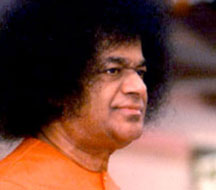
Chanting Rama's name and respecting elders turned Ratnakara into Valmiki
00:04:00Sage Valmiki is the one who composed Ramayana, the history of Rama during the lifetime of Rama. He made sons of Rama, Lava and Kusa sing the composition in the court of Rama. Valmiki, who was at one time a cruel, wicked and uncompassionate person could compose Ramayana that melts the hearts of the listeners due to the incessant singing of Lord’s name. Hence the divine name changes even the hardest stone, melts it to give way to humanness. A small example to illustrate this: There are many students here from the science stream. There is a hard boulder. Seeds when kept on the hard stone either become dry or get eaten by birds. No plant would sprout from the boulder. The boulder, during the course of time due to the heat and rain, will disintegrate into sand and mud. And in this soil when seeds are sown, they will sprout into plants. The plant develops into a big fruit bearing tree. These fruits are eaten by man and become man. What is it that made the immovable rock transform into a moving man? It is the rock itself. Likewise the stonehearted Ratnakara was transformed into Valmiki due to his penance. During the penance anthills grew all over him. When the anthills were washed away by the rains, there emerged, a now transformed, Ratnakara. As he emerged out of ‘valmikamu’, anthills, he came to be known as “Valmiki”. Previously he was Ratnakara who was stonehearted and wicked. The anthill is called as ‘valmikamu’, which revealed a transformed Ratnakara when it got washed away by the rains. Therefore the name “Sage Valmiki”!! What is it that is responsible for the greatness of sage Valmiki? Being able to see, touch and converse with the seven sages is responsible for his greatness. One must visit the elders, respect them, and get their blessings. The most revered elders are one’s own parents! Hence the saying, “Matru devo bhava, pitru devo bhava!” meaning “mother is god, father is god.” One must always bow down to them and receive their blessings. God himself manifests where parents are thus revered and respected.
-
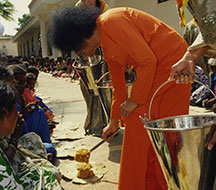
What is Bhava, Raga and Tala
00:02:52You must recognise the truth that in every aspect in India there are three components which are Bhava, Raga and Tala. Conglomeration of these three is said be called as Bharathadesha (India). In the word Bhavamu the first word is ‘Bha’, which is Bhakaram. In the word Ragamu, the first word is ‘Ra’, Rakaramu. In the third word, Talam, the first word is ‘tha’, thakaramu. Combining these three has got the word ‘Bharatha’. So, every act of Bharathiyas (Indians), must be in sync or in union with Bhava, Raga and Tala. In every task undertaken by Indians in day to day life must be a combination of these three aspects viz, Bhava, Raga and Tala. For example, you are studying. When you are studying, you should maintain unity among your Bhava, Raga and Tala. Here Tala means understanding. Bhava means with a good feeling. Raga refers to developing love towards the subject. Similarly, if there is a lecturer there, he needs to combine these three aspects in his lectures too. He needs to understand the subject, love the subject and make a proper process to teach students, these three combined together would make it a good lecture. Similarly, while cooking, there should be a fire proportionate to the quantity that needs to be cooked and vice-versa; One needs to put the salt proportionate to the Dal and vice-versa. If there is less dal and more salt, it would be spoilt and doesn’t taste good. Experiencing everything while knowing its limitations is nothing but the combination of Bhava, Raga and Tala. So, at the first instance we need to understand.
-

Sankeethana and keerthana
00:01:44“Samyakkeerthanamithihisamkeerthanam”, there is a vast difference between Keerthanam and Sankeerthanam. Keerthanam is mostly individual based and its does has a personal Sadhana. On the other hand, Sankeerthana is done to provide the welfare on the entire world. Another name for Sankeerthana is Samoohika Bhajana (Collective singing). This concept for the first time was coined by Guru Nanak who is the founder of Sikhism. Sankeerthana would make you to see the unity in diversity. When the bhajan is sung by all people but which sounds in a single throat is called as Sankeerthana.
-
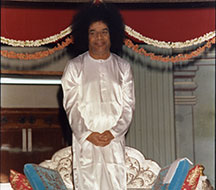
Namasmarana is like the bore-well which draws water from the heart
00:01:18There is water underneath the earth but how can man draw the underground water? There is soil and mud between man and the water. The mud symbolises the worldly transactions and affairs. They need to be removed. The water is available when the mud is removed. On the other hand when a bore-well is installed there, it digs deeper and pumps water from the depths of the earth. That bore-well is the ‘Namasmarana’, chanting of the Lord’s name. Therefore when one puts the bore-well of Lord’s name on one’s tongue, it draws the water of ‘bliss’ from one’s heart. One must always have the Lord’s name on one’s tongue. One may do any work but must do so with an awareness of innate divinity, and then the work will be transformed into worship. All work must be done with the feeling that it is divine activity.
-

Namasmarana is the most essential component in spirituality
00:00:28In the path of spirituality, contemplation of the Lord is most important. By singing the glory of God, one can experience God. Therefore one should invest more and more time in chanting the Lord’s name and should do it out of deeply rooted faith and love.
Topics
- Analogies
- Atma
- Attachment
- Balvikas
- Bhaja Govindam
- Bhajans
- Body
- Character
- Company
- Compassion
- Culture
- Day to day
- Desire
- Devotees
- Devotion
- Dharma
- Discipline
- Discrimination
- Doctors
- Education
- Faith
- Festivals
- Forbearance
- Gayathri
- God
- Gratitude
- Guru
- Health and healthcare
- HIS Life
- Human values
- India
- Karma
- Love
- Mahabharata
- Man
- Meditation
- Mind
- Music
- Musicians
- Nature
- Parents
- Philosophical concepts
- Pleasure and Pain
- Practice
- Ramayana
- Religion
- Sacrifice
- Sadhana
- Sai Organization
- Saints
- Sathya
- Science
- Senses
- Service
- Sevadal
- Shanthi
- Shirdi Baba
- Society
- Spirituality
- Students
- Thoughts
- Time
- Unity
- Upanishad
- Vedas
- Vices
- Yoga
- Youth
